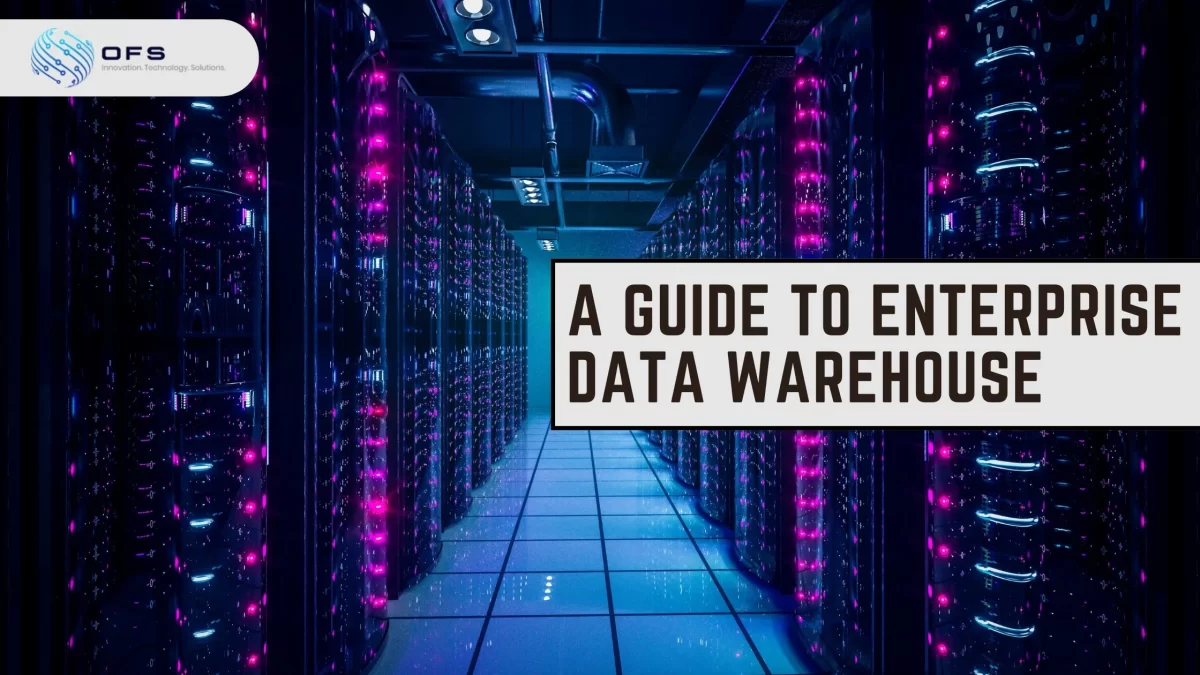We often draw upon past experiences to make the best possible decisions.
Right?
Our brains store vast amounts of information about things we’ve gone through, and we use these memories to help us decide or analyze wisely.
Similarly, companies collect a lot of data about their past activities, which they can use to make better decisions.
While our brains can process and store information naturally, companies require various tools to manage their data effectively. One of the most important tools they use is called an enterprise data warehouse (EDW).
This article will guide you over the ins and outs of enterprise data warehouse, including definition, types, and functions as well as its role in data processing.
Let’s get started.
What is Enterprise Data Warehousing or EDW?

A data warehouse is a place where a company stores all its important data. It is a kind of a centralized repository.
An EDW gathers information from several operational systems, including ERP (Enterprise Resource Planning), CRM (Customer Relationship Management), and HR (Human Resources) systems.
Afterward, it keeps all the information in one place compared to traditional databases that might concentrate on particular departments. Think of it like a vast library where you can find books on every subject.
This allows organizations to aggregate, organize, and analyze information in a way that is accessible and useful for teams across the entire company.
By centralizing data, an EDW helps ensure that all departments are working with the same set of accurate, up-to-date information, leading to better decision-making and strategic planning.
Enterprise Data Warehouse vs. Data Warehouse
Although the terms “data warehouse” and “enterprise data warehouse” are frequently used together, they’re different.
An enterprise data warehouse is designed to store and report on all types of data across an organization, regardless of its source or which department will utilize it.
On the other hand, a traditional data warehouse may focus only on data relevant to a specific department or line of business.
For instance, a marketing data warehouse might only contain information related to marketing campaigns and customer interactions, limiting its utility for other departments like finance or operations.
Why Do Businesses Need EDWs?
Access to accurate and useful information is essential at a time when business strategies are driven by data.
Companies use data to make well-informed decisions about their customers, workers, goods, and other important aspects of their operations.
Businesses rely on data to make informed decisions about products, employees, customers, and other critical areas. Without reliable data, company leaders often have to rely on instinct or intuition when making important choices, which can lead to costly mistakes.
EDWs allow organizations to go beyond gut feelings.
By combining data from different sources, EDWs help teams find answers to important questions quickly.
For instance, sales teams can analyze customer data to identify trends, while HR departments can assess employee performance metrics.
Types of EDWs

There are three categories of EDWs: On-premises data warehouses, cloud data warehouses, and virtual data warehouses.
On-premises or Traditional Data Warehouse
On-premises data warehouses are hosted within the organization’s infrastructure, protected by its firewall. Popular systems include Teradata, Netezza, and Exadata.
While on-premises warehouses provide complete control over data, they also come with added responsibilities. Organizations must invest in a comprehensive tech stack and allocate resources for ongoing maintenance, requiring skilled database administrators, system administrators, and network engineers.
Cloud Data Warehouse
Many organizations are moving towards cloud data warehouses, which offer scalability, flexibility, and cost efficiency. Examples include Amazon Redshift, Google BigQuery, and Snowflake. Cloud data warehouses minimize the need for extra IT staff and resources by enabling companies to buy processing power and storage as needed.
This shift to the cloud enables organizations to scale operations quickly and efficiently, making it an attractive option for growing companies.
Virtual Data Warehouse
Some organizations opt for a third approach known as data virtualization. In this model, data remains in its source systems while a virtual layer is created for analytics and reporting. This can be a simpler and faster way to get started with data analysis, but it can lead to significant performance issues at scale. Moreover, because this method relies heavily on source systems for querying, it may not provide the same level of reliability and efficiency as traditional or cloud-based EDWs.
Benefits of EDWs
Enterprise data warehouses provide numerous advantages for businesses, including:
Central Repository: An EDW acts as a single source of truth for organizational data, ensuring that all teams access consistent information.
Historical Data Maintenance: EDWs maintain a history of transactions and aggregated data that is essential for business intelligence and analytics tools, enabling trend analysis and forecasting.
Support for Multiple Users: An EDW can serve various users across the organization, from sales teams to executives, facilitating collaboration and informed decision-making.
Challenges of EDWs

While EDWs are beneficial, they also present several challenges that organizations must address:
Data ETL Processes: Data must be extracted, transformed, and loaded (ETL) from various source systems into the EDW. This process involves significant effort and resources. For instance, if customer data includes first names, last names, addresses, and genders from different sources, this information must be standardized before it can be loaded into the EDW.
Resource Intensity: Building and maintaining ETL processes can require substantial resources, including time, money, and personnel.
Adapting to New Questions: When business users have additional questions that fall outside the current data warehouse’s scope, it may take weeks or even months to incorporate new data.
Data Duplication and Governance Issues: BI and analytics users often extract data outside the EDW to build performance-optimized cubes and imports, which can create multiple copies of the same data. This situation can lead to outdated information and a lack of governance.
Use Cases for EDWs
Enterprise data warehouses help businesses answer specific questions and make data-driven decisions. Here are some examples of how organizations can leverage an EDW:
- Revenue Analysis: What is the total company revenue for the last two fiscal years, and how does it break down by region?
- Comparative Metrics: What is the average cost of deals in New York compared to Las Vegas?
- Year-over-Year Spending: What is the year-over-year spending across sales, marketing, engineering, finance, and HR departments?
These questions highlight how an EDW can facilitate cross-departmental analysis, allowing businesses to make informed, data-driven decisions that can positively impact their operations and growth.
The Bottom Line
An Enterprise Data Warehouse (EDW) serves as a crucial component in a business’s data strategy, enabling organizations to centralize their data, maintain historical records, and support multiple users across various departments.
While there are challenges involved in implementing and maintaining an EDW, the benefits it provides—such as improved decision-making and data-driven insights—far outweigh these hurdles.
As businesses continue to navigate an increasingly complex data landscape, investing in an EDW can help them stay competitive and agile in a fast-paced environment.

